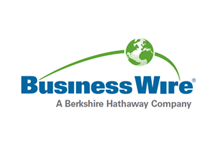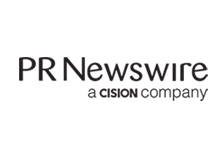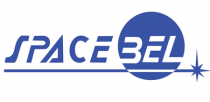BARDA and Partner Therapeutics continue partnership around development of LEUKINE® (sargramostim, rhu GM-CSF) to potentially improve patient care for sepsis
LEXINGTON, Mass., Jan. 9, 2025 /PRNewswire/ -- Partner Therapeutics, Inc. (PTx) today announced a collaboration with the Biomedical Advanced Research and Development Authority (BARDA), part of the Administration for Strategic Preparedness and Response (ASPR) at the U.S. Department of Health and Human Services to fund a phase 2 study in patients with sepsis to assess the safety and enable dose selection of LEUKINE (sargramostim, rhu GM-CSF). The partners also will evaluate monocyte human leukocyte antigen-DR (mHLA-DR) and other biomarkers of immune status that could enable more precise identification of patients with sepsis who could benefit from LEUKINE treatment in addition to standard of care.
Sepsis is life-threatening organ dysfunction caused by a dysregulated host response to infection, characterized by altered immune homeostasis.(1) It represents a critical unmet public health need urgently requiring safe and effective therapeutics guided by biomarkers to enable precise treatment approaches to reduce morbidity and mortality.(2,3 )In 2017, 1.7 million sepsis cases were reported in the US and 48.9 million cases were reported globally resulting in 11 million deaths.(21) Since much of the morbidity and mortality from chemical, biological, radiological and nuclear (CBRN) threats is due to sepsis, the availability of a host-directed therapy to treat sepsis utilizing validated biomarkers to inform treatment would greatly enhance health security. Leukine is currently held for use by ASPR-Strategic National Stockpile (SNS) for the treatment of hematopoietic acute radiation syndrome (H-ARS) as a host-directed therapy.
The PTx-BARDA partnership seeks to enhance patient care through restoration of immune homeostasis in patients with sepsis exhibiting a persistent immune suppressed state. Research shows that patients with sepsis with persistent immune suppression are unable to mount a sufficient immune response and experience significant mortality.(2,4,5) The clinical study will further evaluate the safety of LEUKINE in these critically ill patients and seeks to confirm the utility of mHLA-DR as a marker to identify sepsis-associated immune dysregulation.(2,6-10) Additional promising biomarkers of immune status in patients with sepsis also will be evaluated. Under a prior collaboration, BARDA and PTx supported the establishment of a Laboratory Developed Test (LDT) for mHLA-DR, which will be utilized in this collaboration.
"We are grateful to BARDA for their support of this program, which has the potential to advance medical care for patients with sepsis by evaluating potential tools for measuring immune status to inform targeted immunomodulatory therapy," stated John L. McManus, President, Health Security and Critical Care of Partner Therapeutics, Inc.
In small randomized clinical trials in critically ill patients with severe sepsis or septic shock, LEUKINE has been shown to promote immune homeostasis, as measured by a rapid and sustained improvement in mHLA-DR expression, as well as other markers of innate and adaptive immune function.(7,11-16) The observed changes in immune status were accompanied by improved clinical outcomes including 28-day survival and resolution of infection.
GM-CSF helps maintain immune homeostasis via innate and adaptive responses, and promotes tissue repair mechanisms.(2,7,17) While classically known for promoting differentiation of bone marrow (BM) precursor cells, and stimulating proliferation, differentiation, and maturation of myeloid cells, GM-CSF also induces mHLA-DR and plays important roles in antigen presentation, T-cell activation, and myeloid cell survival and function.(7,17-19) HLA-DR is part of the heterodimeric major histocompatibility complex class II (MHC II) on monocytes and is a measure of the cells' capacity for antigen-presentation. MHC II regulates monocytes' crosstalk with T helper cells, enabling the activation of the adaptive immune system.(4,20)
This project has been supported in whole or in part with federal funds from the Department of Health and Human Services; Administration for Strategic Preparedness and Response; Biomedical Advanced Research and Development Authority (BARDA), under contract number 75A50124C00061.
REFERENCES
1. Singer M et al. The third international consensus definitions for sepsis
and septic shock (Sepsis-3). JAMA. 2016;315(8):801-810. doi:
10.1001/jama.2016.0287
2. Cajander S et al. Profiling the dysregulated immune response in sepsis:
overcoming challenges to achieve the goal of precision medicine. Lancet
Resp Med. 2023;12(4):305-322. doi: 10.1016/S2213-2600(23)00330-2
3. Shankar-Hari M et al. Reframing sepsis immunobiology for translation:
towards informative subtyping and targeted immunomodulatory therapies.
Lancet Resp Med. 2024;12(4):323 - 336. doi: 10.1016/S2213-2600(23)00468-X
4. Venet F, Monneret G. Advances in the understanding and treatment of
sepsis-induced immunosuppression. Nat Rev Nephrol. 2018
Feb;14(2):121-137. doi: 10.1038/NRNEPH.2017.165
5. Lindell RB, Meyer NJ. Charting a course for precision therapy trials in
sepsis. Lancet Respir Med. 2024 Apr;12(4):265-267. doi:
10.1016/S2213-2600(24)00070-5
6. Monneret G, Lepape A, Voirin N, Bohé J, Venet F, Debard A-L, Thizy H,
Bienvenu J, Gueyffier F, Vanhems P. 2006. "Persisting Low Monocyte Human
Leukocyte Antigen-DR Expression Predicts Mortality in Septic Shock."
Intensive Care Medicine 32 (8): 1175-83. doi: 10.1007/S00134-006-0204-8
7. Meisel C, Schefold JC, Pschowski R, Baumann T, Hetzger K, Gregor J,
Weber-Carstens S, et al. 2009. "Granulocyte-Macrophage Colony-Stimulating
Factor to Reverse Sepsis-Associated Immunosuppression." American Journal
of Respiratory and Critical Care Medicine 180 (7): 640-48. doi:
10.1164/RCCM.200903-0363OC
8. Venet F, Lukaszewicz AC, Payen D, Hotchkiss R, Monneret G. Monitoring the
immune response in sepsis: a rational approach to administration of
immunoadjuvant therapies. Curr Opin Immunol. 2013 Aug;25(4):477-83. doi:
10.1016/J.COI.2013.05.006
9. Morris AC, Datta D, Shankar-Hari M, Stephen J, Weir CJ, Rennie J,
Antonelli J, et al. 2018. "Cell-Surface Signatures of Immune Dysfunction
Risk-Stratify Critically Ill Patients: INFECT Study." Intensive Care
Medicine 44 (5): 627-35. doi: 10.1007/S00134-018-5247-0
10. Tremblay JA, Peron F, Kreitmann L, Textoris J, Brengel-Pesce K,
Lukaszewicz AC, Quemeneur L, Vedrine C, Tan LK, Venet F, Rimmele T,
Monneret G, et al. A stratification strategy to predict secondary
infection in critical illness-induced immune dysfunction: the REALIST
score. Annals of Intensive Care 2022 12:76. doi:
10.1186/S13613-022-01051-3
11. Rosenbloom AJ, Linden PK, Dorrance A, Penkosky N, Cohen-Melamed MH,
Pinsky MR. 2005. "Effect of Granulocyte-Monocyte Colony-Stimulating
Factor Therapy on Leukocyte Function and Clearance of Serious Infection
in Nonneutropenic Patients." CHEST 127 (6): 2139-50. doi:
10.1378/CHEST.127.6.2139.
12. Hall, MW., Knatz NL, Vetterly C, Tomarello S, Wewers MD, Volk HD,
Carcillo JA. 2011. "Immunoparalysis and Nosocomial Infection in Children
with Multiple Organ Dysfunction Syndrome." Intensive Care Medicine 37
(3): 525-32. doi: 10.1007/S00134-010-2088-X
13. Spies C, Luetz A, Lachmann G, Renius M, von Haefen C, Wernecke K-D,
Bahra M, Schiemann A, Paupers P, Meisel C. 2015. "Influence of
Granulocyte-Macrophage Colony-Stimulating Factor or Influenza
Vaccination on HLA-DR, Infection and Delirium Days in Immunosuppressed
Surgical Patients: Double Blind, Randomised Controlled Trial." Edited by
Sachin Yende. PLOS ONE 10 (12): e0144003. doi:
10.1371/JOURNAL.PONE.0144003
14. Pinder EM, Rostron Aj, Hellyer TP, Ruchaud-Sparagano M-H, Scott J,
Macfarlane JG, Wiscombe S, et al. 2018. "Randomised Controlled Trial of
GM-CSF in Critically Ill Patients with Impaired Neutrophil
Phagocytosis." Thorax 73 (10): 918-25. doi:
10.1136/THORAXJNL-2017-211323
15. Hassan SA, Alamed Z, Syed U, Nadeem MT, Khushdil A. The Effect of
Granulocyte-Macrophage Colony-Stimulating Factor on Neutropenia and
Mortality in Neonatal Sepsis. Pak Armed Forces Med J 2023; 73(6):
1644-1647. doi: 10.51253/PAFMJ.V73I6.7456
16. Vacheron CH, Lepape A, Venet F, Monneret G, Gueyffier F, Boutitie F,
Vallin H, Schwebel C, Maucort-Boulch D, Friggeri A; GRID Study Group.
Granulocyte-macrophage colony-stimulating factor (GM-CSF) in patients
presenting sepsis-induced immunosuppression: The GRID randomized
controlled trial. J Crit Care. 2023 Dec;78:154330. doi:
10.1016/J.JCRC.2023.154330
17. Dougan M, Dranoff G, Dougan SK. GM-CSF, IL-3, and IL-5 Family of
Cytokines: Regulators of Inflammation. Immunity. 2019 Apr
16;50(4):796-811. doi: 10.1016/j.immuni.2019.03.022
18. Mathias B, Szpila BE, Moore FA, Efron PA, Moldawer LL. 2015. "A Review
of GM-CSF Therapy in Sepsis." Medicine 94 (50): e2044. doi:
10.1097/MD.0000000000002044
19. Joshi I et al. Utility of monocyte HLA-DR and rationale for therapeutic
GM-CSF in sepsis immunoparalysis. Front Immunol. 2023;14:1130214. doi:
10.3389/fimmu.2023.1130214
20. Shi Y, et al. Granulocyte-macrophage colony-stimulating factor (GM-CSF)
and T-cell responses: what we do and don't know. Cell Res.
2006;16(2):126-133. doi: 10.1038/sj.cr.7310017
21. Rudd KE, Johnson SC, Agesa KM, et al. Global, regional, and national
sepsis incidence and mortality, 1990-2017: analysis for the Global
Burden of Disease Study. Lancet. 2020 Jan 18;395(10219):200-211. doi:
10.1016/S0140-6736(19)32989-7
ABOUT LEUKINE
LEUKINE (sargramostim) is a glycosylated recombinant human granulocyte-macrophage colony-stimulating factor (rhu GM-CSF) produced by recombinant DNA technology in yeast. The product is commercially available in the United States and accessible through a named patient program operated by Tanner Pharma Group outside of the United States.
LEUKINE is indicated:
-- To shorten time to neutrophil recovery and to reduce the incidence of
severe and life-threatening infections and infections resulting in death
following induction chemotherapy in adult patients 55 years and older
with acute myeloid leukemia (AML).
-- For the mobilization of hematopoietic progenitor cells into peripheral
blood for collection by leukapheresis and autologous transplantation in
adult patients.
-- For the acceleration of myeloid reconstitution following autologous bone
marrow or peripheral blood progenitor cell transplantation in adult and
pediatric patients 2 years of age and older.
-- For the acceleration of myeloid reconstitution following allogeneic bone
marrow transplantation in adult and pediatric patients 2 years of age
and older.
-- For treatment of delayed neutrophil recovery or graft failure after
autologous or allogeneic bone marrow transplantation in adult and
pediatric patients 2 years of age and older.
-- To increase survival in adult and pediatric patients from birth to 17
years of age acutely exposed to myelosuppressive doses of radiation
(Hematopoietic Syndrome of Acute Radiation Syndrome [H-ARS]).
Important Safety Information for LEUKINE (sargramostim)
Contraindications
-- Do not administer LEUKINE to patients with a history of serious allergic
reaction, including anaphylaxis, to human granulocyte-macrophage
colony-stimulating factor, sargramostim, yeast-derived products, or any
other component of LEUKINE.
Warnings and Precautions
-- Serious hypersensitivity reactions, including anaphylactic reactions,
have been reported with LEUKINE. If a serious allergic or anaphylactic
reaction occurs, immediately discontinue LEUKINE therapy, and institute
medical management. Discontinue LEUKINE permanently for patients with
serious allergic reactions.
-- LEUKINE can cause infusion-related reactions that may be characterized
by respiratory distress, hypoxia, flushing, hypotension, syncope, and/or
tachycardia. Observe closely during infusion, particularly in patients
with preexisting lung disease; dose adjustment or discontinuation may be
needed.
-- LEUKINE should not be administered simultaneously with or within 24
hours preceding cytotoxic chemotherapy or radiotherapy or within 24
hours following chemotherapy.
-- Edema, capillary leak syndrome, and pleural or pericardial effusions
have been reported in patients after LEUKINE administration. LEUKINE
should be used with caution in patients with preexisting fluid
retention, pulmonary infiltrates, or congestive heart failure. Such
patients should be monitored.
-- Supraventricular arrhythmia has been reported in uncontrolled studies
during LEUKINE administration, particularly in patients with a history
of cardiac arrhythmia. Use LEUKINE with caution in patients with
preexisting cardiac disease.
-- If absolute neutrophil count (ANC) > 20,000 cells/mm3 or if white blood
cell (WBC) counts > 50,000/mm3, LEUKINE administration should be
interrupted, or the dose reduced by half. Monitor complete blood counts
(CBC) with differential twice per week.
-- Discontinue LEUKINE therapy if tumor progression, particularly in
myeloid malignancies, is detected during LEUKINE treatment.
-- Treatment with LEUKINE may induce neutralizing anti-drug antibodies. Use
LEUKINE for the shortest duration needed.
-- Avoid administration of solutions containing benzyl alcohol (including
LEUKINE for injection reconstituted with Bacteriostatic Water for
Injection, USP [0.9 % benzyl alcohol]) to neonates and low birth weight
infants.
Drug Interactions
-- Avoid the concomitant use of LEUKINE and products that induce
myeloproliferation. Monitor for clinical and laboratory signs of excess
myeloproliferative effects.
Adverse Reactions
Adverse events occurring in >10% of patients receiving LEUKINE in controlled clinical trials and reported at a higher frequency than in placebo patients are:
-- In recipients of autologous bone marrow transplantation (BMT)-asthenia,
malaise, diarrhea, rash, peripheral edema, urinary tract disorder
-- In recipients of allogeneic BMT-abdominal pain, chills, chest pain,
diarrhea, nausea, vomiting, hematemesis, dysphagia, GI hemorrhage,
pruritus, bone pain, arthralgia, eye hemorrhage, hypertension,
tachycardia, bilirubinemia, hyperglycemia, increased creatinine,
hypomagnesemia, edema, pharyngitis, epistaxis, dyspnea, insomnia,
anxiety, high glucose, low albumin
-- In patients with AML-fever, weight loss, nausea, vomiting, anorexia,
skin reactions, metabolic laboratory abnormalities, edema
ABOUT PARTNER THERAPEUTICS
Partner Therapeutics, Inc. (PTx), an integrated biotechnology company, focuses on development and commercialization of late-stage therapeutics to improve health outcomes in treatment of cancer and other serious diseases. The company believes in delivering products and supporting medical teams with the purpose of achieving superior outcomes for patients and their families. Visit www.partnertx.com
MEDIA CONTACT
media@partnertx.com
View original content to download multimedia:https://www.prnewswire.com/news-releases/barda-and-partner-therapeutics-continue-partnership-around-development-of-leukine-sargramostim-rhu-gm-csf-to-potentially-improve-patient-care-for-sepsis-302347356.html
SOURCE Partner Therapeutics, Inc.





